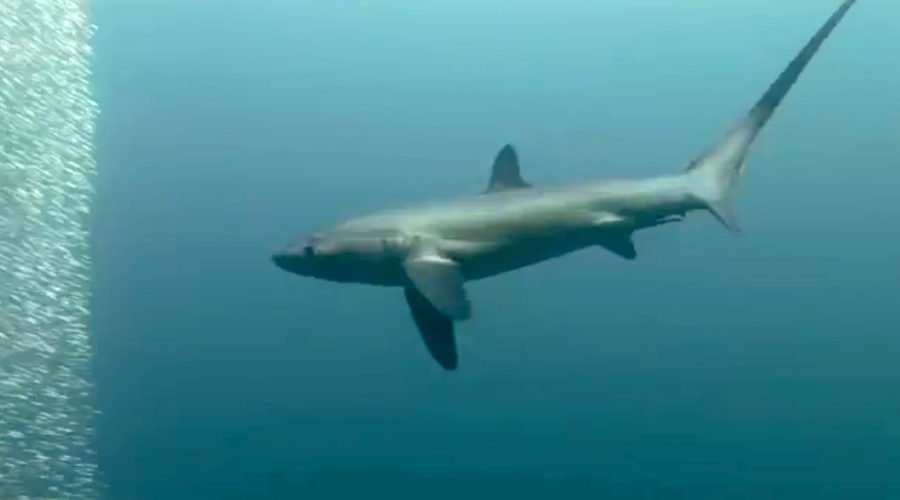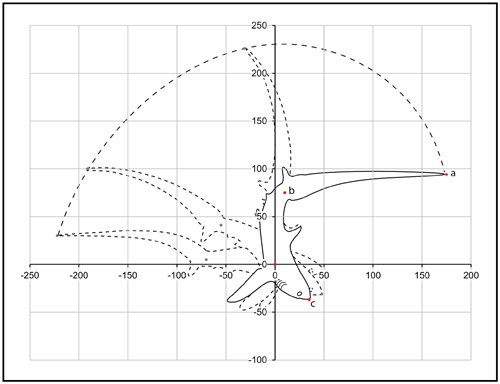Astonishing hunting strategy of thresher sharks

A thresher shark strikes. (Credit: Klemens Gann/The Thresher Shark Research and Conservation Project)
THRESHER SHARKS HAVE incredibly long, scythe-like tails that make up more than half their up-to-6m body length. Experts had long suspected that they used these tails as part of a hunting strategy to strike at prey, but it had never been confirmed.
Now, researchers studying pelagic thresher sharks (Alopias pelagicus) at Pescador Island in the Philippines have caught them using their tails to strike at shoals of sardines and captured it on film.
Researchers led by Dr Simon Oliver, at the University of Liverpool in the UK, used underwater video cameras to record 25 instances of thresher shark hunting behaviour between June and October 2010. In many of these cases the sharks would speed in and then brake suddenly, flicking their powerful tails over their heads to slam them into the shoals (see video, above).
“This extraordinary story highlights the diversity of shark hunting strategies in an ocean where top predators are forced to adapt to the complex evasion behaviours of their ever declining prey,” says Simon.
Thresher sharks display predatory tail strike
Incredibly, Simon’s team found that these tail slaps could lash out at up to 80km/h. The speed was such that ‘supercavitation’ bubbles would occur behind the moving tail tip, as a wave of low pressure caused water in the immediate vicinity to spontaneously boil. Some sardines were hit directly in the attacks, while others were killed by the pressure wave.
Not all strikes were successful but when they were, up to seven fish were killed in one hit and then the thresher shark could circle to pick them up at its leisure.
“While it has long been suspected that thresher sharks hunt with their tails, little was previously known about the behaviour in the wild,” writes Simon and his co-authors today in the journal PLoS One. “The evidence is now clear; thresher sharks really do hunt with their tails… Tail-slapping is an efficient strategy for hunting schooling prey since thresher sharks are able to consume more than one prey item at a time.”
Dolphins and killer whales were already known to use tail-slaps to corral and stun fish, but this behaviour has never been seen in a shark before. Sperm whales and humpback whales employ tail slaps to communicate over great distances.
All three species of thresher shark – common, pelagic and bigeye – are found in Australian waters, as well as tropical and temperate oceans around the world.

Figure shows angle and trajectory of thresher shark tail whip. (Credit: PLoS One/The Thresher Shark Research and Conservation Project)
RELATED ARTICLES
Shark attacks in Australia: a timeline
10 myths about sharks
13 tips for avoiding a shark attack
Are humans to blame for shark attacks?
Great white shark nursery
Shark attack increase blamed on humans
VIDEO: bamboo sharks play dead
Mediterranean’s sharks originated in Australia
New shark repellents under development
Shark attack survivors unite to save sharks
Sharks are fantastic navigators
Sharks are colour-blind, new study finds
Great white shark freed from plastic noose
State of our oceans
Outrage over plans to cull sharks in WA
Whale shark spotted in the Southern Ocean
…More shark stories

